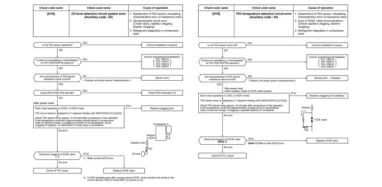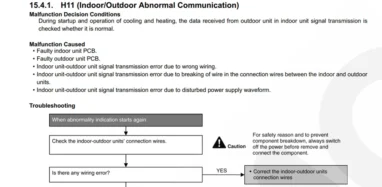Why is the capacity of air conditioning units stated in tons? For first-time AC buyers, they cannot help but be confused when salespeople differentiate prospect AC units in terms of tons. Most of you are more familiar with the term tons when referring to the amount of weight that a truck can tow.
If you are planning to buy your very first AC unit ever, don’t let the reference of tonnage puzzle you. This doesn’t have anything to do with the weight of the unit. The number of tons is about the specific amount of heat that a particular unit can remove from your home in an hour.
So, why is it that tonnage is used to measure an AC unit’s capacity?
To answer your question, you might need to take travel down history lane.
Before Willis Carter invented the air conditioner, ice blocks were used for cooling rooms. This ice was taken from the lakes that froze during the winter months, and people store them until summer arrives. Records revealed that in 1890 alone, there were 4 million tons of ice taken from the Hudson River. The specific amount of energy necessary for melting a ton of ice for a day was 12,000 BTU.
Equating the “Ton” measurement with the capacity of air conditioners
Based on the laws of Physics, the moment the ice goes lower than the freezing point, heat absorption will begin. The temperature will also increase at the same time. Once the ice reaches the melting point of 32 degrees Fahrenheit, this will still absorb heat, yet the ice wouldn’t have any temperature difference. This will start to melt instead. The specific amount of heat required for melting the ice is known as latent heat of fusion. The highest amount of energy for melting a pound of ice is 143 BTU.
If you have a pound of ice at a temperature of 32 degrees Fahrenheit, 143 BTU is necessary for completely melting it. If you want to melt a ton of ice, it will take (143 BTU/lbs)*(2000 lbs) of heat to melting it down. This will be 286,000 BTU.
The length of time required for melting the entire ice will depend on how fast the heat gets pumped in. Using a standard period as reference, early developers of air conditioning units opted to use 24 hours. When the ice uniformly melts in 24 hours, this will absorb heat at 286,000 / 24 hrs = 11,917 BTU per hour, and today, this is rounded up to 12,000 BTU.
What is the amount of AC tonnage you need?
If you are shopping for a new AC unit, you have to calculate the specific amount of tonnage that your unit needs for properly cooling your home.
To get a good estimate of the AC tonnage that you need, you just need to multiply the number of square feet you want to cool by 25. It will be equivalent to the overall number of BTUs that you need for sufficiently cooling the space. This number should then be divided by 12,000 to know the tonnage capacity you need for your new AC unit.
The calculation gives you a good estimate of your specific needs. Just so you know, several factors can affect the tonnage needs of your home air conditioning unit. These include the following:
- Existing insulation of your home
Is your house well insulated? Houses with excellent insulation tend to hold cold air more easily and effectively, making it cheaper to cool and require less tonnage.
- Existing landscaping of your house
Houses with large trees shading them will remain cooler compared to houses in wide-open areas that will require less tonnage as a result.
- Your home’s architecture
It is typically harder to cool a home’s second or third floor. Ranch-style houses are often cheaper to cool. Less tonnage is required for cooling a home with fewer floors.
AC tonnage for commercial use
Commercial AC units are often bigger compared to residential units although the difference is not a lot. Small stores or simple offices may not require more cooling capacity than larger houses while manufacturers or restaurants may need a bigger system.
Some of the variables that must be considered for commercial AC tonnage are the following:
- The number of people that typically work within the area
- Frequency of customers that come in and out of the premises
- Presence of equipment that produces large amounts of heat or pieces of equipment sensitive to fluctuations in temperature.
- Loading docks or large service bays that must be considered
If all of these factors are present, you will need a system of air conditioners or an air conditioner with a larger tonnage for keeping your business cool and cozy.
It doesn’t matter if you want to replace the existing AC unit at your business or you want to cool your house better, a professional HVAC technician can provide a more accurate estimate regarding your requirements for AC tonnage.
How many tons is your air conditioner unit?
Air conditioning units for residential use range from 1 up to 5-ton units. If your house is exceptionally large and you need a bigger unit, you might want to consider installing several units around your home. It is also common to install an air conditioning system and another cooling source or two central air conditioners in bigger homes.
Check the model numbers to determine AC tonnage
To determine the AC tonnage using your unit’s model numbers, just follow these steps.
- Locate the exterior AC unit.
- You will see the Model Number or M/N number under the brand name. The M/N number’s first digits indicate the SEER rating and unit type.
- Find the second set of numbers in the larger M/N number. This indicates the unit’s BTUs per hour.
- Divide BTUs by one ton or 12,000. This number is equivalent to the AC unit’s tonnage.
If still confused in regards to how to determine ac tonnage from model number, please refer to our latest guide for more information.


